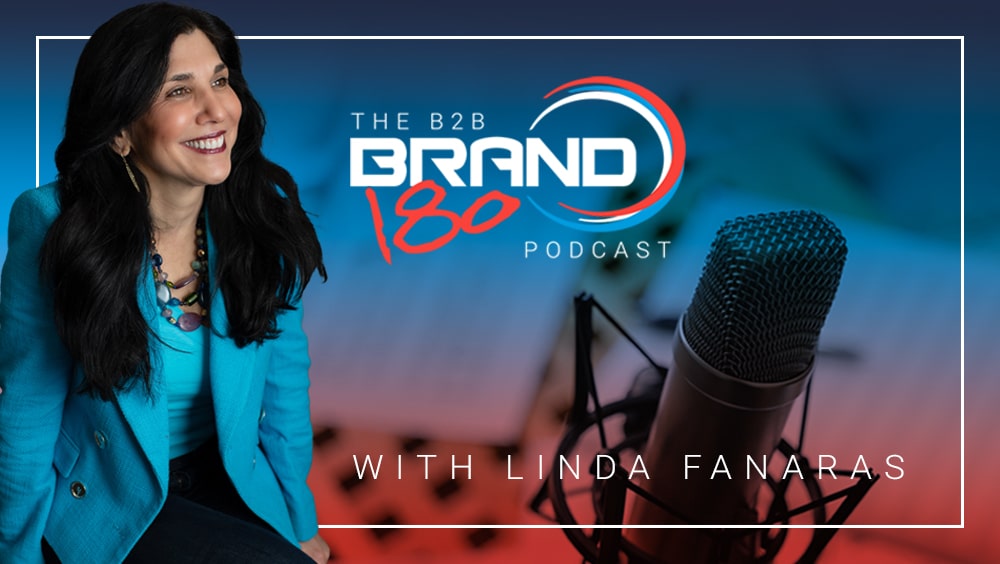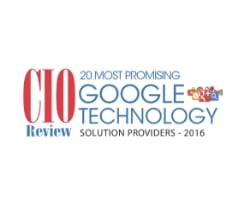Linda speaks with Riccardo Porta, Global Director of Customer Experience at Dow, and Jim Tincher, Customer Experience Expert and best-selling author, about the real-world implementation of customer experience at Dow to create more profitable outcomes.
During the episode, Riccardo, Jim and Linda explore how Dow applies customer experience (CX) principles to the B2B space, and how they measure success using CX benchmarks. They also discuss how Dow uses customer insights to drive innovation and change.
Links mentioned in this podcast include:
Heart of the Customer’s Do B2B Better: https://heartofthecustomer.com/dob2bbetter/
Dow’s CX Benchmarking for B2B: https://corporate.dow.com/en-us/seek-together/cx-benchmarking-for-b2b.html
Thanks for listening to the B2B BRAND180 Strategy podcast with Linda Fanaras, CEO/Strategist at Millennium Agency.
Linda Fanaras:
Welcome everyone. If you want to transform your B2B marketing into a powerhouse brand, then you may want to listen in now. Hi, I’m Linda Fanaras, CEO of Millennium Agency, and I’m your host today and excited to bring Riccardo Porta, Global Director of Customer Experience from Dow, a material science leader committed to delivering innovative and sustainable solutions for customers in packaging, infrastructure, mobility, and consumer care. Welcome, Riccardo.
Riccardo Porta:
Thank you, Linda, for having me here.
Linda Fanaras:
Absolutely. And I have Jim Tincher, Customer Experience Expert and best-selling author of “Do B2B Better” and “How Hard Is It to Be Your Customer? Using Journey Mapping to Drive Customer Focused Change.” Welcome back Jim. It’s great to have you back.
Jim Tincher:
Linda, I’ve been looking forward to coming back again, so thanks for having me.
Linda Fanaras:
Awesome. Well, let’s get to it. So, you’re both going to share some insight, knowledge and some key tips on how to keep B2B customers happy, which we all want to achieve, particularly in this day and age. So, let’s get started. Why don’t we do a quick introduction with you, Riccardo. Tell us a little bit about yourself and what you.
Riccardo Porta:
Sure. Actually, this year marks my 20th year in B2B chemical material science manufacturing at Rohm and Haas and Dow. I spent most of my 20 years in supply chain and operations, and I started to get interested and involved in CX about five years ago. Why five years? Because that was the time where Dow and DuPont actually went through this complex merge and spin transaction. And as a result of that spin, Dow, which is 125 years old company, emerged as a new Dow, how we call ourselves, Dow, Inc. four years old company. We have a new passion, a new ambition, and a new CEO. In fact, one of the first things that our new CEO put in place was to state out “What is our ambition?” We want to be, as you said at the beginning, the most innovative, customer-centric, sustainable and inclusive material science company in the world. So, when people ask me, “What’s your job at Dow?” What I like to say is, that’s my job. I want to turn that ambition into a reality, into very real, pragmatic actions that we can all take to advance towards that customer centricity. And, and that’s really what I do at Dow today.
Linda Fanaras:
That’s great. I mean, that’s all, that’s what we all should be focusing in on, is how to make that customer experience more effective and positive. And you, Jim, do you want to give us a quick, overview of yourself for the listeners who have not met you yet and obviously about what you do?
Jim Tincher:
Sure. So, I’m the CEO of the organization called Heart of the Customer, and we help organizations better improve their customer experience and make sure that they are selling more as a result, that they’re less expensive to serve, that we’re upselling. That customer experience becomes a business discipline. And when I was writing “Do B2B Better,” I spent a lot of time with Riccardo and his team at Dow, and he does an excellent job of not just improving the customer experience, but showing how you could be a healthier company as a result, which is why I was excited when you agreed to bring him on today.
Linda Fanaras:
Excellent. Well, thank you. So, we’ll get started. So, we’ll talk about, the book, “Do B2B Better,” it’s a way to drive growth through these game-changing customer experience, and Riccardo, I have a couple of questions for you because it looks like there are four key actions that the book talks about that are based on the customer experience flywheel that I actually wanted to bring up today. Number one, link everything to business value. Number two, identify an emotional “north star” that you use as a design target and that you measure. Number three, connect the customer ecosystem data, behavioral, operational, descriptive, and financial data to your analysis. And then four, use deliberate change management. Riccardo, I would love you to speak to these a little bit and feel free, Jim, to chime in as you’d like to as well.
Riccardo Porta:
Absolutely. When I was lucky enough that Jim shared with me an advanced copy of his book just before he was published. And when I start reading it, I loved the framework that he used around those four exact points because those are not only all the things we do at Dow, but Jim found a way to put a structure that is easy to explain to people that are not CX practitioners. It makes it easy to maintain and also organize around. So, I really love that framework built around those four points. And maybe if we start from the first one around, it’s all about business value, right? That’s I think, where everything starts and ends. It’s being able to demonstrate and explain both to internal stakeholders and outside, how the CX work leads to better business outcomes. This is important because a lot of programs, particularly in B2B, a lot of CX programs don’t even start, or maybe they die just after they’re started because of inability to prove that business value. So, for us that we were lucky, our CEO I mentioned before, put customer centricity as an ambition, as a reason why we exist. And that gave us kind of the leap of faith to at least get the work going because it took us some time. But at the end, we are now in a position where we have data that shows how customers that have a better experience, and I can talk about how we measured that, customers that have a better CX also grow volume, revenue margin more and faster compared to customers that have a lower type of experience. And that’s how you prove the value.
Linda Fanaras:
Yeah, that’s great. And I’ll ask Jim this question, so you know when we’re talking about linking everything to business value, how would a company actually figure out what business value means to them? Because it could mean anything, frankly, depending on the size of the business and what they’re dealing with as far as their customer base or their channels are concerned. So, could you speak to that a little bit?
Jim Tincher:
Sure. Let me frame it up a little bit, because many of your listeners probably have a customer experience program somewhere in the bowels of the company. And in our research, most of those customer experience programs, their goal is to get customers to move their mouse a little bit more to the right when they fill out a survey. And that’s nice and all, but they don’t actually tie it back to do those customers order more and do they stay longer? Do they cost less to serve? Which is where one of the reasons they wanted Ricardo on here is they do a good job of proving that. And it comes back to the philosophy, is that the reason we do customer experience is not to improve survey scores, it’s to create an environment where customers come to you first, so that for Riccardo, one of their key outcomes is a customer who will do joint innovation, who wants to work with Dow to bring new products to the world. Now, that’s obviously not an everyday accomplishment, that’s their home run. But also, they want to create an environment where they can show that when customers say it’s better to work with Dow, that their order velocity improves, as well as they order across more categories of products. And that’s what great customer experience is, is that we show that when the experience gets better, so does the bottom line.
Linda Fanaras:
So, which brings me to my next question, which is identifying that emotional “north star” and Riccardo, can you speak to, I’m just curious, how would you go about determining what that is? How do you design that and how do you target it and measure it in a way that actually ties back to the actual customer and back to revenue?
Riccardo Porta:
Yes. We found that what Jim says in his book about the importance of the emotional “north star” is absolutely true. Our customer journeys can be very complex, very long. They have different touch points that involve different personas, and it can be very complicated to separate out the noise from the, what we call the “moment that matters.” What are really those touch points in the journey that have the biggest impact on customer behaviors in terms of buying more, staying longer, or operating in ways that are less expensive to serve? And what we learned is what Jim also shows in his research, is that those moments that matter are the moments that are charged with high emotions. In a recent study we did, for example, we measured two emotions, enjoyability and confidence, those are the two we mostly measure at Dow. And in a recent study we observed that customer confidence in a product being available, when they come to us and place an order, what is their confidence that product is available when they need it? That confidence is a huge, huge impact on their overall experience with us. When they lose that confidence, it doesn’t matter if our account team does a great job, it doesn’t matter if product quality is great, doesn’t matter if you have great technical support. When they’ve lost that confidence, their entire journey, it doesn’t look easy, enjoyable, nor is it. And as a result, they are in a deal that they regret having made. And as a result, we see those volume revenue margins shrinking over time and vice versa when you have confident customers. So, that’s important of emotions.
Linda Fanaras:
Yeah, that’s a great point. Did you want to say something, Jim, to that?
Jim Tincher:
Yeah, I’ll go a little bit deeper on that because what Riccardo’s saying is probably not language most people are used to hearing out of customer experience. Notice he didn’t say, are they likelihood- likely to recommend us to common management. He said, are they confident in us? And my favorite one is when I met Riccardo’s, boss, the Chief Commercial Officer, Dan Footer, we were working on their complaints journey and he said to me, “Jim, my goal is to create a complaints journey that’s enjoyable.” I’m like, “Well Dan, a chemical ordering complaints journey you want enjoyable,” but that’s what Dow measures and they can show that when customers are confident and they say it’s more enjoyable to work with Dow, those customers want to work more with Dow, which is what we should all be striving for.
Linda Fanaras:
So, one of the big factors here, taking that customer ecosystem (how are they behaving, the operational aspects, the description), like tying all these elements together, and I’m envisioning maybe like a hub and spoke model, how do you tie all this together so you have a solid analysis of whether this is working or not? Because you could talk to a client or a customer and they sound like they’re happy, but frankly they might be mad about something else that just happened that you’re not even aware of. So how do you tie all these pieces together to create a system that’s true and accurate, and that actually measures some of these aspects of the B2B customer experience? I can start with Riccardo. That would be great.
Riccardo Porta:
Sure, sure. I think that’s absolutely essential for, you know, survey, as Jim also says, is not the end point of a CX program, it is the starting point of a CX program. Voice of Customer is one of the many tools that you can use to diagnose and help you identify problems, pain points or areas of opportunities. But then, once you have identified, used the VOC and survey response to identify those areas, then you need to make hypotheses, and then you can use your own operational data to validate those hypotheses, test those hypotheses, and that way you had a lot of added value by combining your survey and VOC information with your operational measures. One is, of course, is you can cover the customers that typically don’t answer surveys. We all know response rate for surveys can vary, but they never, you know, cover the majority of the customers. Your operational data, your transactional data does go down to the very detailed level. Every customer, potentially every order. So that’s one advantage. You extend that coverage, and you have a very representative view of what’s going on. And the second thing, it gives you a dictionary, a way to talk back to your organization in using the terminology, the KPIs, the scorecards that they’re familiar with, and you can help make the bridge between this is your scorecard and KPI, and this is how your performance against this KPI will impact the customer experience, which, ultimately, will impact customer behaviors. So that ability to translate CX measurements, VOC measurements, back into the KPIs that every function and every group within the company is using is fundamental to get engagement, to get ownership, and to ultimately drive improvement.
Jim Tincher:
And when Riccardo and I first met about four years ago, we were working on the product availability and delivery journey. Pretty common journey with manufacturing. And at that point, I think Riccardo, you were just fairly new into customer experience at that point, and definitely still had your supply chain head on as well. And when we shared the voice of the customer on certain paths along the journey, the first place Riccardo went is, well, we have data that matches here. That, for example, on time delivery or how often the customer changes the date or how often we change the date, and that’s just how Riccardo thinks, which is fabulous, is that he translates between that voice of the customer and the voice of the business, which for anybody listening from customer experience, that’s absolutely critical to be able to speak to them in the language they like. The founder of Proside, drawing a blank on his name right now, but he has a quote that I love, which is: “Executives speak three languages: finance, finance and finance,” and the ability to translate the customer behavior into those financial pieces, that’s what’s so magical.
Linda Fanaras:
Yeah, that’s a great point.
Riccardo Porta:
And I would add to that, Jim, that at least that’s my feeling, right? How do I get to know myself when I think we are moving the needle and making an impact is when you find yourself changing in the guts on how your company operates. You change your process, you change how the work gets done. For me, that’s a much more impactful, a much deeper impact on CX versus, you know, let’s change the bottom on the, you know, web order screen on from here to there. It’s still CX, it’s still user experience, but it’s a completely different ballgame. And to be able to get into the guts of how your company operates, you have to talk that language. You can’t talk CX language only.
Linda Fanaras:
You know, the last component of this is actually using deliberate change management. And to your point, it’s not about adding another survey and not executing on that. But how do you get this in motion? Because every time you have to make a change like this, you’re really, depending on the size of your company, you may be turning a ship because it’s a lot of work to make substantial changes in an organization depending on their size. So how do you implement those changes fast enough to keep that customer happy while also instituting these changes internally.
Riccardo Porta:
It is indeed, Linda, a lot of work and it’s, in my experience, the hardest part of driving CX transformation is not about, you know, what do we do next? It’s not technology, it’s not interpreting the customer feedback. The hardest part is always to drive that change, and convince people that if they do the work differently, it’s good for them, it’s good for the customers and good for business, and that’s very energy draining. There are different ways, tactics you can use to get people on board. One I would like to mention, for example, is journey mapping. We use that as a great way to show people first, give them visibility of how and what they do, how that impacts customer experience, but also help them understand what we’ve always found, which is most of the time when you have a customer pain point, you have an employee pain point on the other side of the fence. So, when you address the pain point for the customers, it’s also a way for you to make the employee’s life easier. Give them easier information, easier access to information, easier tools and processes so they can… respond to customer inquiries, for example. So that’s a great way to show to your people what’s the value, what’s the need for them to improve the customer experience.
Linda Fanaras:
Yeah, that’s great. Jim, did you want to add to that at all?
Jim Tincher:
Well, yeah, and one of the things I like about what Riccardo and the whole program at Dow is doing is that, first of all, their challenge is that they have tens of thousands of employees to influence and a very small team to do that. And so, what they do, instead of, again, just using survey, they actually understand what does this individual care about? And that might be inventory turn, that might be increased ebit, things that don’t intuitively match customer experience, but it’s tying it back and finding out how it does impact. At our conference, right off the bat, Riccardo intimidated everybody by walking through 25 minutes how he answered the role of inventory in the success of the business and how it impacts the customer experience, which is marvelous to be there and to see that happen. If you want your executives to think more about the customer, then you have to show how the executive will be more successful by thinking about the customer. And if you don’t make that link, then they’ll give you attention for a day or two, but then they’ll go back to what they’re working on in the past. But if you can take the time to understand what motivates that executive and draw the line between customer experience and their success, as Riccardo said, that’s the hardest part about customer experience. But when you do it right, that’s how you get a transformation to happen.
Riccardo Porta:
And if I can add to that, Jim, as you said, it’s very tough to get that executive sponsorship and support and understanding that about the customer experience is good for customers, but also good for business. And it’s part of that why we also as Dow, right, we are chairing what we call an advanced manufacturing CX consortium for B2B companies. Our goal with that consortium is really to help establish a benchmark for measurement of CX and also over time show that companies that have superior CX also have above average return for their shareholders. That will help us build the case for CX across B2B and help all B2B companies to grow their CX programs and value to customers.
Linda Fanaras:
You know, I do have, I have a question because I think customers can be emotional. So, let’s say you’ve got this customer experience going on, everything’s looking good, it’s been pretty solid for a while, and then maybe something happens that throws their emotions off and all of a sudden you are just no good, and things are not going their way and they’ve totally flipped their perception of you, regardless of what the data says. How do you deal with that? How do you deal with those types of instances?
Riccardo Porta:
Yeah. What we have seen is a couple of things. First is, our data shows that it’s much easier and faster to lose trust and confidence than it is to gain trust and confidence. Uh, we have seen that from data that when your performance towards customers deteriorates, very quickly that translates into that deterioration of emotion, confident plus whatever the one you measure. When you bring that operational performance back up, it will take time for that trust and confidence to go back to where it was. So that’s a key learning for us because it shows how critical it’s to maintain, it’s much easier to maintain and sustain than it is to regain. And at the end, I mean, there is no secret or one single recipe, right? How do you regain trust and confidence? It takes a lot of energy, a lot of efforts, it’s a lot around communication, being proactive and walking the talk in our experience.
Jim Tincher:
I think also you go into that and a little bit differentiation between trust and confidence. Our research shows that often confidence comes into, for example, systems. Confidence that you’ll deliver on time, confidence that your products will be right. Trust seems to be more human generated. And so, the role of your account manager, your seller, whatever you call that role, that works for your customers, that’s the other part. And we break trust into two parts: functional versus emotional trust. So functional trust is that yes, your systems will work, but it needs to be paired with an individual is giving that emotional trust. Somebody who is able to form the strong relationship and help your customers feel that yes, your company has their back, and you need both hats. You need your system to be working well and to be in place so you can deliver to excellence every time, but you also need to have that individual who is providing that trust at the same time.
Linda Fanaras:
So, my last question is, is I wanted to ask about the AMCX consortium and why does that matter for B2B companies that are interested in doing CX? And what is it exactly?
Riccardo Porta:
Thank you for asking, Linda. Yes. As I say this consortium, the goal of this consortium is really to bring back together key minds and top leadership in B2B CX to achieve a few things. First thing is to set the standards for measurement of CX in B2B. We don’t aspire to create the nominative rankings of company A, B, C, D, and what is the best and what is the not as good as the others? Like sometimes it exists for B2C, that’s not our goal. But our goal is, for example, to be able to, for each of the participating companies, to answer questions like the ones we got during COVID. For Dow, like for many other companies, I think during COVID we saw a deterioration of CX of course, as a result of disruptions in supply and all of that. And a lot of questions we’re getting from the board, from our seniors leaders was, “Should I be worried about this deterioration? Is it going down more than others, faster than others?” Nobody can answer those questions today for B2B, because there is no comparison, there is no way to benchmark, right? So that’s one of the gaps we want to close. And the second one is the one I mentioned before, we want to prove over time and with data that better CX is good for business outcomes, so that the executives of the future in B2B will be able to more comfortably make that leap of faith like they’ve done for diversity, like they’ve done for sustainability. Nowadays, I think everybody agrees that diverse leadership teams deliver better ideas and better decisions, and that’s because we have the data to support that statement. We want to get the same thing on CX so that we can help all B2B companies to invest in CX. And we are open to, you know, if more companies are interested to join, I can provide the informational link. You can just Google AMCX B2B, and there is a contact us page for welcoming new members.
Linda Fanaras:
Okay, that’s great. Do you want to repeat that one more time for me?
Riccardo Porta:
Yes. AMCX, like Advanced Manufacturing CX, Consortium B2B. You Google that and it will send you to our contact us form. There is no cost to join and again, we are driving together the uplifting of B2B CX.
Linda Fanaras:
That’s great. That is fantastic. Thank you both, Jim and Riccardo. That was excellent insight on keeping our B2B customers happy. So let me just take a minute and thank Jim Tincher, author of “Do B2B Better: Drive Growth Through Game-Changing Customer Experience.” And our guest today, Riccardo Porta, Global Director of Customer Experience from Dow. Thank you both for joining us today on the Brand 180 Podcast. If everyone has liked what they heard, please press like, share, or subscribe today.





























